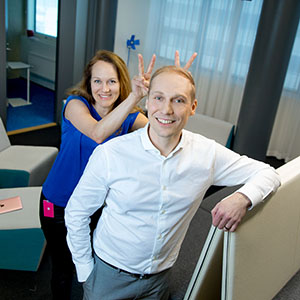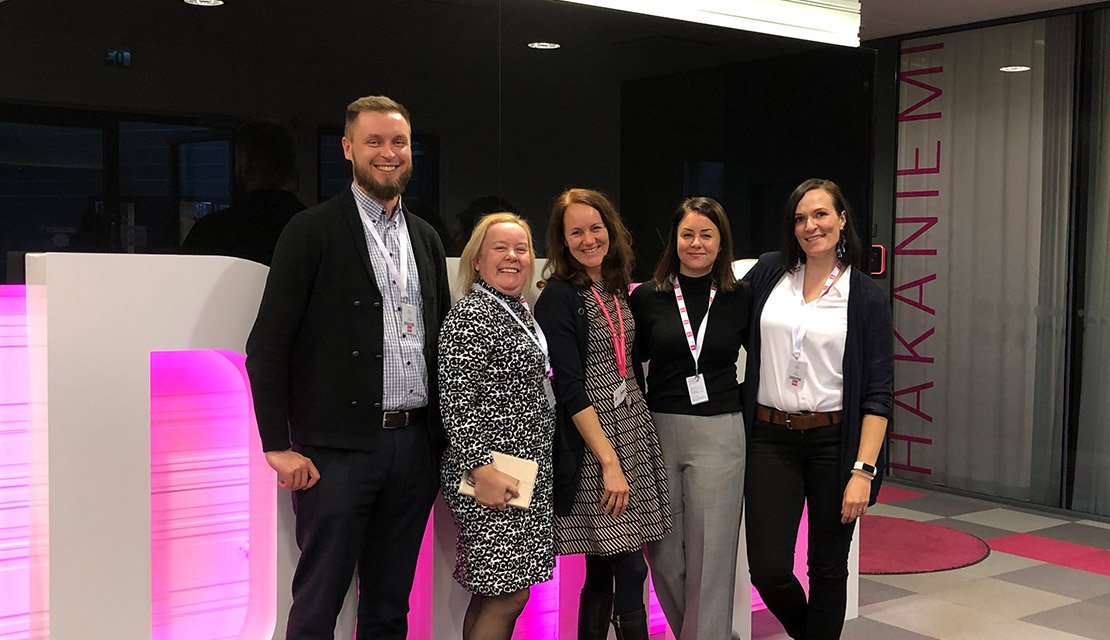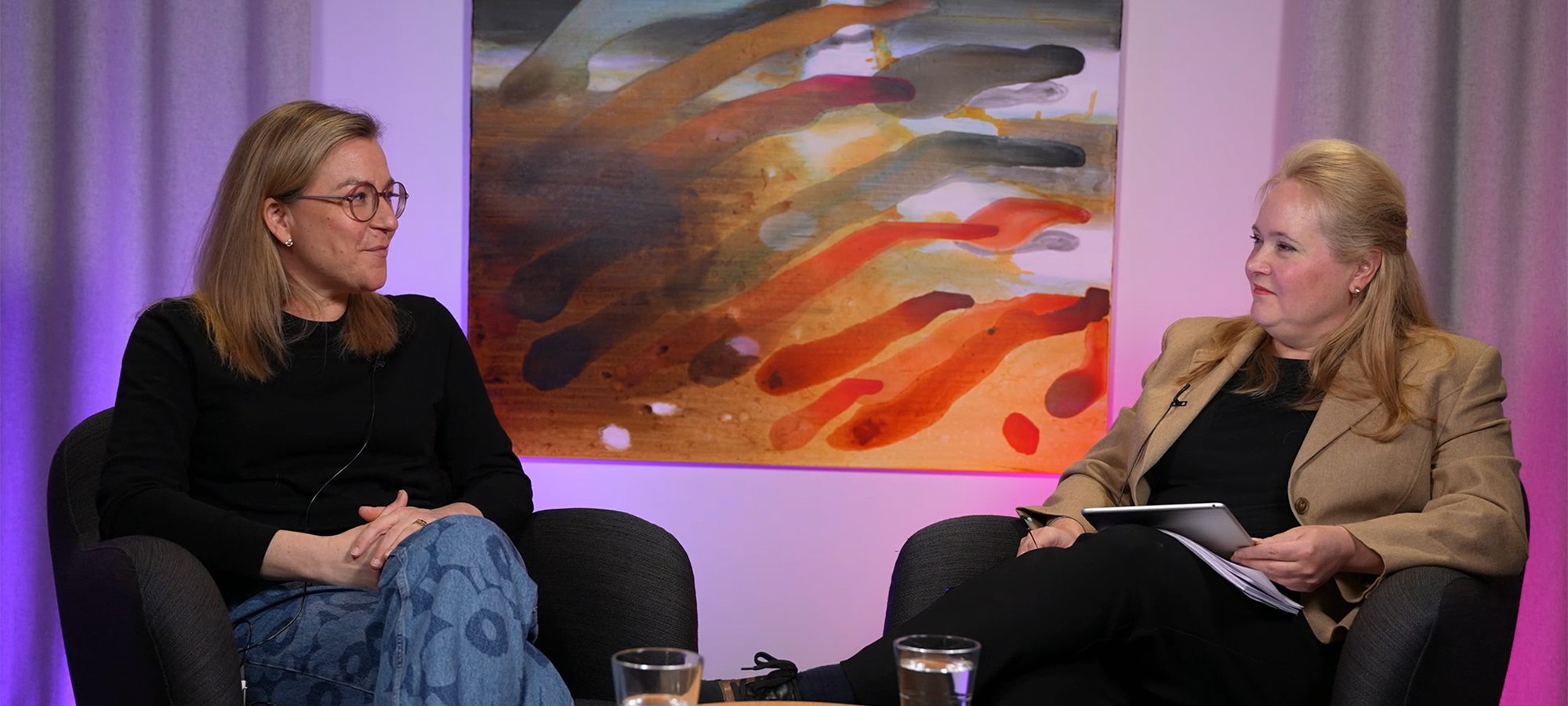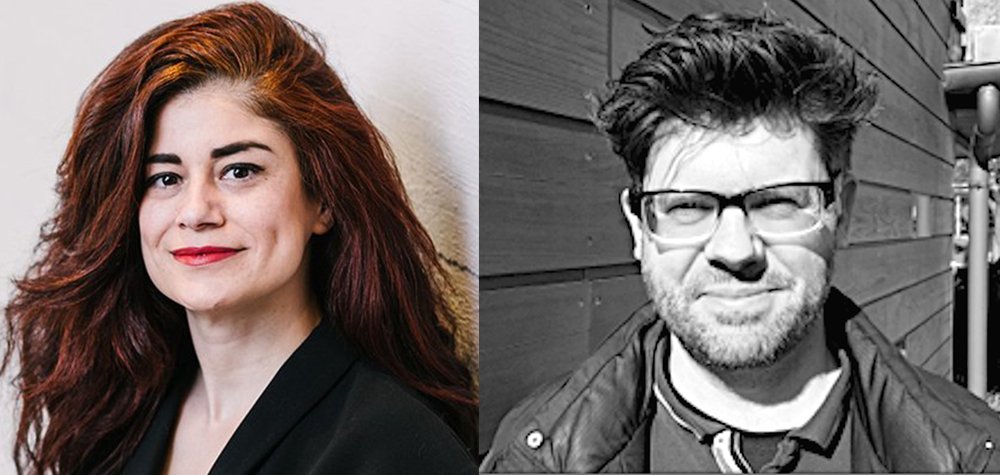When DNA defined its organization’s three strategic capabilities a few years ago, agility was chosen as one of them. Agile methods were already applied in DNA’s projects, but the aim was to spread agile thinking even more widely.
This was more than well-suited to the interests of Lotta Lipponen. Lipponen started her career as a software developer, but the focus of her work quickly changed to working with people. She wanted to supplement her technical training background with MBA studies.
“I have worked extensively with different teams as an Agile Coach. I wanted to develop better working methods, find common practices and a common language. Also, in terms of my own career, an MBA degree will open up new options," Lipponen describes.
Lipponen ended up in Aalto MBA program, which concludes with a nine-month cooperative business project completed as group work. The participants themselves propose the topics of the projects and the most popular ones are selected for implementation.
“Implementing Agile in Support Functions” was a topic that Lipponen developed a couple of years ago together with her supervisor Jari Jokiaho, who is the project office leader (in the picture with Lotta Lipponen).
How should support functions be addressed?
“Regarding timing, the project and Lotta’s studies coincided perfectly with the need to illustrate the meaning of agility to the entire DNA organization. As for development, we know how to do this, but how would you inform the rest of the organization and the support functions about it?” Jokiaho describes the starting point.
 Other participants were also interested in the problem, so the project started at the turn of the year 2019 to 2020. Lipponen acted as a project owner and as a link to DNA, bringing data and necessary contacts to the team. The project also allowed her to focus more closely on promoting agility.
Other participants were also interested in the problem, so the project started at the turn of the year 2019 to 2020. Lipponen acted as a project owner and as a link to DNA, bringing data and necessary contacts to the team. The project also allowed her to focus more closely on promoting agility.
“In the past, when I was in more operational work, I implemented agile thinking throughout the entire organization alongside my own work, and the job proceeded in very small steps. During my studies, I was able to fully focus on the development of Agile DNA,” Lipponen describes.
Also, business projects always have an internal sponsor from the organizations, in this case Jari Jokiaho. He himself had just completed a master’s thesis on DNA’s agility for his second degree, and the thesis also served as a basis for the team’s work.
“I enjoy the results,” Jokiaho describes his role at first, but continues more thoroughly: “I sparred with the team via Lotta, and I think we probably had 2 to 3 sessions. Also, I was one of the persons from DNA who was interviewed for the project.”
Lean vs. agile, support from theory
The essential component of the business projects were also theoretical parts, which are supported by Aalto University professors. DNA’s project was directed by Lauri Saarinen, Assistant Professor of Industrial Engineering, and Tuukka Laurila, Logistics Manager at Telinekataja, was responsible for the theoretical part in the team.
Laurila started MBA studies in order to update and complement his master’s degree in industrial engineering.
“This was the most interesting project option and a topic to which I could most contribute through my own expertise. In my previous degree, I focused on Supply Chain Management. I was familiar with lean and what happens in production and in warehouse work, but not with knowledge work so much,” says Laurila.
Laurila thinks agility and lean are cousins, if not siblings.
”Lean is about eliminating the wastes of the production process of standard products. In agile and knowledge work, instead of standardizing, the final product is customized according to the customer’s needs and most of the planning takes place during production,” Laurila explains.
As for the theory part, the work was also supported by design science methodology, the iterative approach and the change management discipline.
“Change management has quite a big role when establishing new practices,” Lipponen reminds.
“Surprisingly concrete benefits”
According to Lipponen and Jokiaho, the MBA team’s project has moved very well into practice. Application of the practices started already in the early pilot projects and webinars, in which also DNA’s management participated.
“We obtained surprisingly concrete benefits. Most importantly, the team was able to crystallize the idea of agility at DNA’s organizational level. The principles were communicated in DNA’s language and summarized in four main points. In this way, they were easier to convey and understand,” Jokiaho describes.
The project resulted in tools such as the Agile Start-up Package, which enables DNA teams to familiarize themselves with agile thinking and get started putting it into practice. In addition, the team recommended a series of actions for how DNA could continue to promote agility after the project.
“The rest of the action recommendations have also been budgeted for this year. For example, a partner has been acquired for the study path drawn up from the customized training. The first cohort has already completed the training and the next one is already being scheduled,” tells Lipponen.
According to Lipponen, the Agile Start-up Package has improved in each round of use, in accordance with agile thinking. Many teams have also wanted to start experimenting with agility in form of a practical pilot.
“For example, a six-month development project has been carried out in six weeks. The stories of real people spread this happy news.”
Laurila from Telinekataja is also satisfied with the project and the outcome of the whole MBA program.
“I got what I wanted, and this really broadened my horizons. It was a great opportunity to participate in a project where people at the management level say they are eagerly awaiting the results of our work. Also, I got a lot of insight for an agile mobile application project, which I’m leading alongside my full-time job.”
|
The Aalto MBA Business Project During Aalto MBA studies, participants take part in the Business Project (BP). The project can be described as the MBA participants’ final thesis, although the BP report is not expected to be as academic as a master’s thesis or a research paper. Each Aalto MBA participant can suggest a topic for a project, providing that they are able to identify a relevant and tangible strategic business challenge within their own organization, and the organization is willing to have a fresh, even critical, outsider’s view about the challenge, and offer their support for the project. The Business Project can also concentrate on establishing a whole new start-up business. The MBA participants vote to choose which topics will be included in the BP, after which MBA participants are assigned to projects based on the participants’ individual preferences and competencies, as well as group diversity and dynamics. Confidentiality issues are taken into consideration when assembling the teams. Each project is assigned an academic tutor, most often a professor from Aalto University, to provide academic support and specific expertise within an area that is useful and relevant for the project in question. Depending on the number of participants in an MBA cohort, each cohort works on 6-10 different BP cases, executed by separate teams. The end goal of the BP is for participants to exploit the knowledge they have accumulated during the MBA studies to construct an analytical solution or a tool for the strategic business challenge that the BP group is working on. |
You can download the 'Implementing Agile in Support Functions' Business Project for your reference below:





















